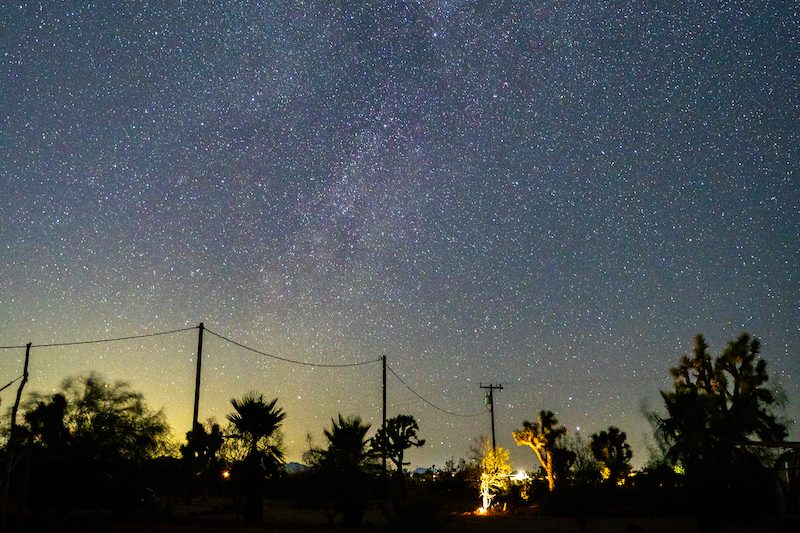
The National Parks of the United States are renowned for their breathtaking landscapes, diverse ecosystems, and incredible outdoor adventures. However, there’s a side of these natural wonders that often goes unnoticed—their magnificent night skies. While there are countless incredible views to behold at the national parks across the country, you might not realize the views you’re missing after dark. If you’re planning a trip to a National Park, don’t skip the best National Parks for stargazing!
In this blog post, we’ll delve into the world of never-ending night skies, where you can escape the glare of city lights and immerse yourself in the mesmerizing beauty of the cosmos. The remoteness of these National Parks means that there is no light pollution, making them perfect for all the stellar activities!
WHAT MAKES THESE PARKS BEST FOR STARGAZING?
This might seem obvious, but the best National Parks for stargazing have the darkest skies! Before we embark on our journey through the 17 National Parks, let’s understand the concept of a dark sky. Many of us have never truly experienced the full grandeur of the night sky due to light pollution from urban areas. There is an organization dedicated to finding and preserving these areas – The International Dark-Sky Association (IDA). The IDA defines a dark sky as “an area where artificial light pollution is minimized, allowing for optimal stargazing and celestial observation.” You might not realize the impact that city lights have on what you’re seeing in the night sky, until you see a truly dark sky.
LET’S GO STARGAZING!
So if you’ve wanted to experiment with astrophotography, have never witnessed a meteor shower, or always dreamed of seeing the Milky Way – You’ll want to visit one (or all!) of these 17 National Parks for stargazing! These National Parks have earned the prestigious designation as Dark Sky Parks, offering visitors a chance to witness celestial wonders like never before.
ARCHES NATIONAL PARK
One of the most popular National Parks in Utah – Arches, is worth visiting day AND night! Marvel at the natural arches by day and stargaze beneath the vast desert sky by night.
Plan your visit to Arches. Open 24 hours. Vehicle reservations are required April 1-October 31.
BIG BEND NATIONAL PARK
Experience the Texas desert’s stark beauty while observing the Milky Way’s brilliance overhead. Songs are written about the Texas sky – and this is no exception.
Plan your visit to Big Bend. Open 24 hours.
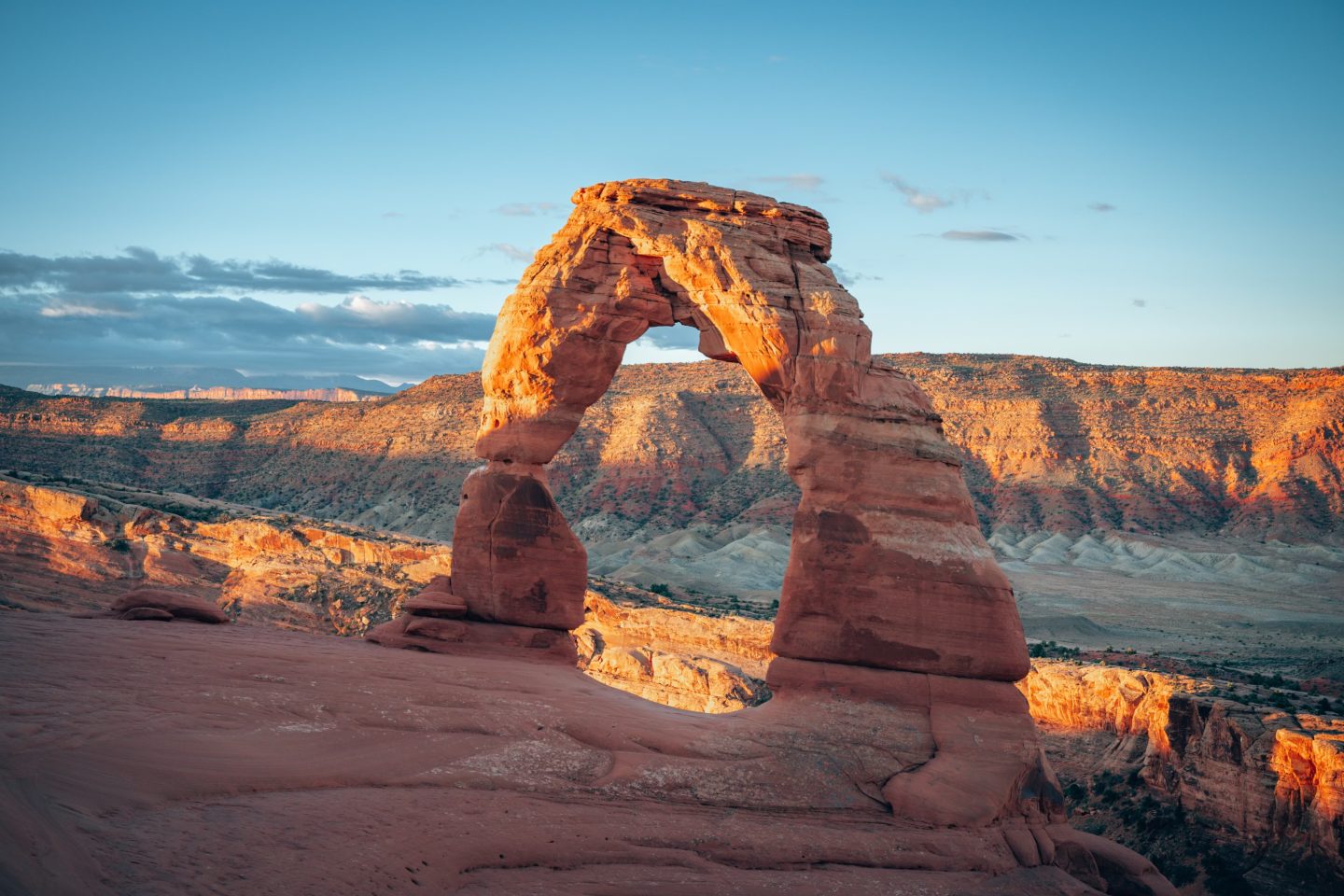
BLACK CANYON OF THE GUNNISON NATIONAL PARK
Peer into the abyss during the day and gaze at the cosmos during the night. One of the lesser known National Parks, you’ll find less crowds here. Enjoy the views down below and up above!
Plan your visit to Black Canyon of the Gunnison. Open 24 hours a day with no reservations required, but be sure to check for seasonal road closures!
BRYCE CANYON NATIONAL PARK
The park’s unique hoodoos are only rivaled by the captivating celestial displays. Admire the starry night sky from the amphitheater and then head to sunrise point to watch the hoodoos illuminate in the first light of day. A magical experience you won’t soon forget!
Plan your visit to Bryce Canyon. Open 24 hours. May be temporary road closures after winter snow storms. Always check current conditions for more information.
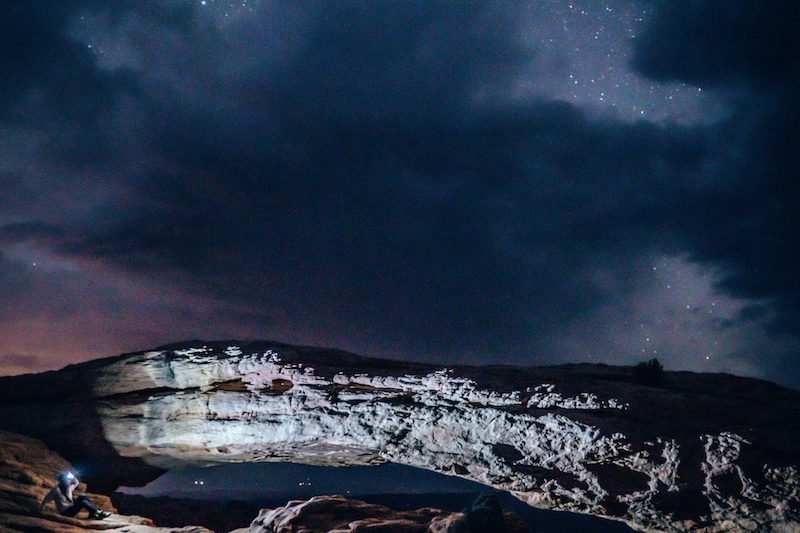
CANYONLANDS NATIONAL PARK
Explore rugged canyons by day and witness the universe’s wonders by night. It shouldn’t be a surprise that all of Utah’s Big 5 National Parks made the list! While Arches and Zion are incredibly popular, you’ll find fewer people at Canyonlands – but you’ll still find amazing landscapes and unbeatable night skies!
Plan your visit to Canyonlands. Open 24 hours year-round, but some facilities may close during the winter seasons.
CAPITOL REEF NATIONAL PARK
Not far from Canyonlands in Utah, you’ll find Capitol Reef. Go from vast canyons to towering layers of ancient rock formations and dark skies make for an otherworldly experience.
Plan your visit to Capitol Reef. Open 24 hours.
DEATH VALLEY NATIONAL PARK
The hottest place on Earth also offers some of the coolest stargazing opportunities. Open skies beyond what the eye can see. Stand 300 feet below sea level and look up into space!
Plan your visit to Death Valley. Open 24 hours. Conditions change quickly in this region. Flash flood, extreme heat, and other extreme weathers can impact closures. Always check current weather and road conditions when planning to visit Death Valley.
GLACIER NATIONAL PARK
Montana’s pristine wilderness offers unparalleled views of the night sky. You don’t want to miss seeing it in person!
Plan your visit to Glacier. Open 24 hours. If you plan to visit Going-to-the-Sun Road, be sure to check for seasonal closures as well as vehicle reservations and restrictions.
GRAND CANYON NATIONAL PARK
Descend into the depths of the canyon during the day and ascend to the stars at night.
Plan your visit to Grand Canyon. South Rim is Open 24 hours all year long. North Rim is closed to all vehicles December 1-May 15 and no visitor services are available.
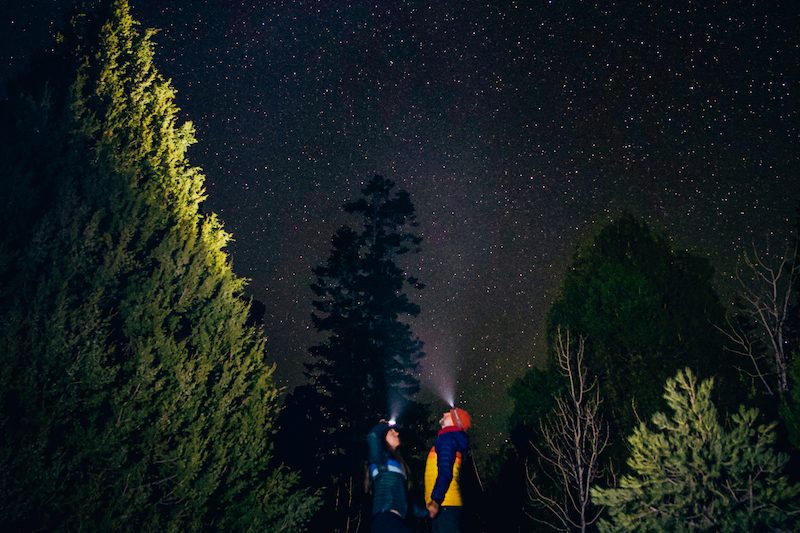
GREAT BASIN NATIONAL PARK
Discover the solitude of the desert and the majesty of the cosmos. During 2023, Great Basin National Park is on the course of an Annular Eclipse! You can typically plan your trips around spectacular celestial events and witness history.
Plan your visit to Great Basin. Park grounds are open year-round. Be sure to check for seasonal road closures.
GREAT SAND DUNES NATIONAL PARK
Located in southern-central Colorado along a scenic byway – and zero light pollution. These towering dunes provide the perfect backdrop for stargazing adventures.
Plan your visit to Great Sand Dunes. Open 24 hours.
JOSHUA TREE NATIONAL PARK
Iconic desert landscapes by day, dazzling constellations by night. Capture an epic starry-sky photo with a famous Joshua Tree silhouette. If you’re looking to do more than stargaze, check out our article on 5 Must-Do Activities in Joshua Tree National Park!
Plan your visit to Joshua Tree. Open 24 hours.
MAMMOTH CAVE NATIONAL PARK
While you can’t see stars in the cave, the park offers fantastic stargazing above ground. With campgrounds and hiking trails, there’s plenty of area to try and catch shooting stars. This is one of the National Parks that is free to visit – no entrance fee required!
Plan your visit to Mammoth Cave. Open 24 hours. Cave tour route availability and times change depending on the season.
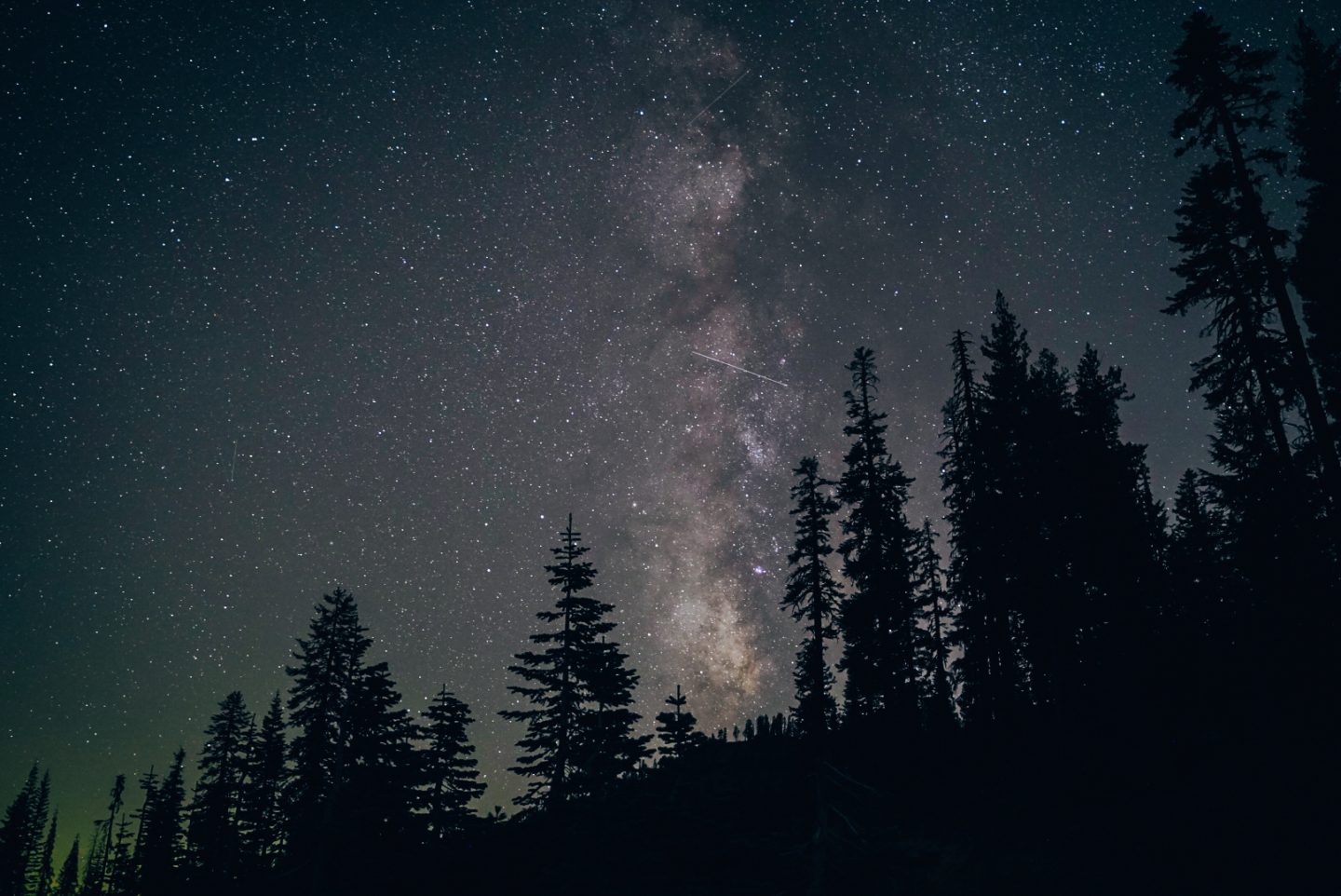
MESA VERDE NATIONAL PARK
Explore the ancient cliff dwellings and then peer into the celestial past. Tours of the dwellings are available seasonally – but the skies are always open here.
Plan your visit to Mesa Verde. Park is always open, but many areas and trails have hours of 8am-sunset daily. Be sure to check before visiting!
PETRIFIED FOREST NATIONAL PARK*
Although this is considered a Dark Sky Park… it is actually not great for stargazing. While Petrified Forest closes daily at sunset, we’ve still included it on this list because you do have the chance to stargaze just outside the park’s boundaries. This is a smaller park and very dog-friendly, so it’s a great one to hit because you can cover so much in one day with your furry friend! Check out our Ultimate Guide to Petrified Forest to find out all you need to know!
Plan your visit to Petrified Forest. Open 8am-5pm.
VOYAGEURS NATIONAL PARK
Minnesota’s pristine waters and dark skies create a heavenly combination. If you plan a trip during the months of August or September, you’d be able to book a Starwatch Cruise! Check out planets and galaxies while cruising the waters of the National Park.
Plan your visit to Voyageurs. Open 24 hours.
ZION NATIONAL PARK
Famous for its red-rock canyons, Zion offers equally stunning celestial displays. Sunrise at the Altar of Sacrifice, sunset at The Watchman, or stargazing from the valley floor – Zion is a MUST-VISIT National Park! The most-visited National Park in Utah for good reasons!
Plan your trip to Zion. Open 24 hours. Zion Canyon Road is closed to vehicles during busy season and you must use the free shuttle.
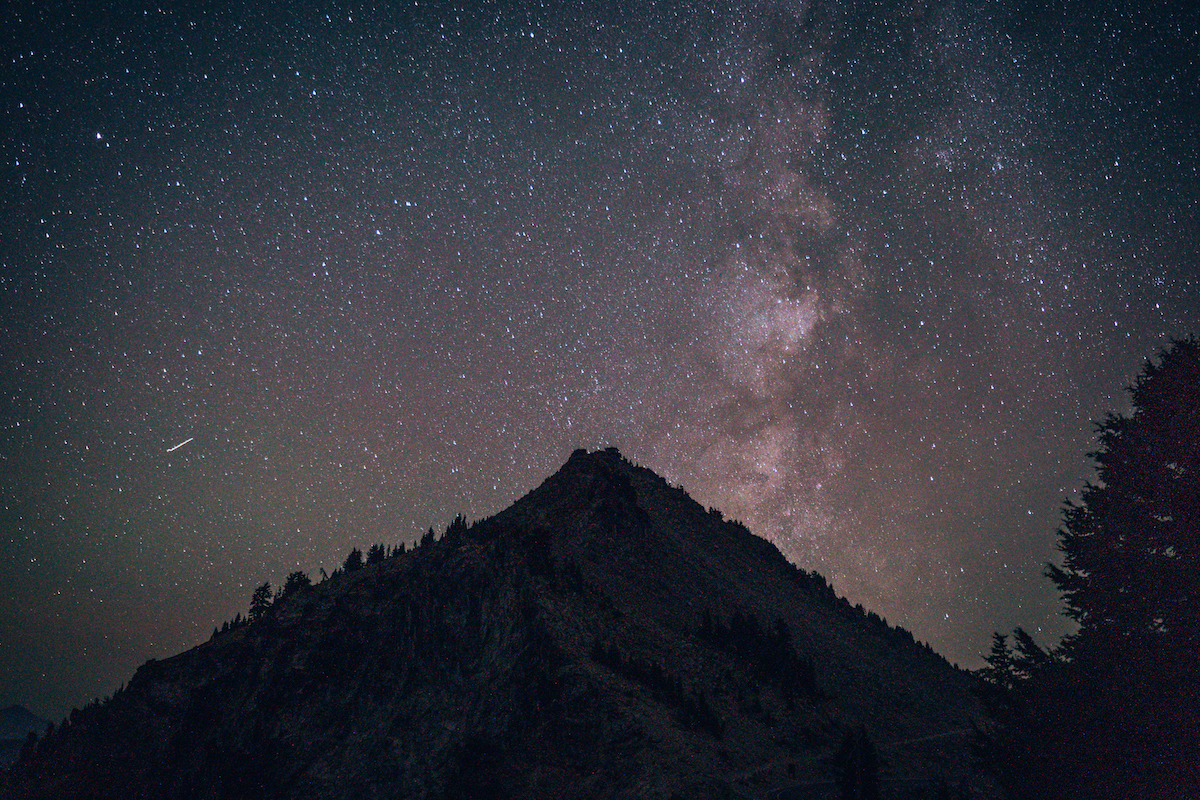
Many Dark Sky National Parks go beyond the typical stargazing experience. They offer night sky programs, including ranger talks, guided tours, and access to powerful telescopes. Whether you’re camping or exploring the backcountry, these programs enhance your understanding of the cosmos.
Looking to do something more unique? If you aren’t familiar with Tinggly, they are a company based on gifting experiences over stuff. Find a stargazing tour to one of these National Parks or another Dark Sky location that fits into your trip itinerary and let them handle the rest! Check them out or read our full review of Tinggly HERE.
17 BEST NATIONAL PARKS FOR STARGAZING
Dark Sky National Parks are a precious resource for anyone seeking to connect with the universe in its purest form. As you plan your next national park adventure, consider visiting one of these 17 celestial wonders. Remember, the stars are always shining, waiting for you to gaze up and wonder at the vastness of our universe. So, pack your telescope, set up your camp, and prepare for a night of stargazing that you’ll never forget! Stargazing, shooting stars, planets, and the Milky Way are all waiting for you at these 17 best National Parks for stargazing!
NEED MORE NATIONAL PARK INSPO?
Check out these articles!
- 9 MUST VISIT NATIONAL PARKS FOR SOFT ADVENTURES
- 10 SOFT ADVENTURES IN GRAND TETON NATIONAL PARK
- 5 MUST-DO ACTIVITIES IN REDWOOD NATIONAL PARK AND STATE PARKS
Be sure to check us out on Instagram and follow along on our Soft Adventures!